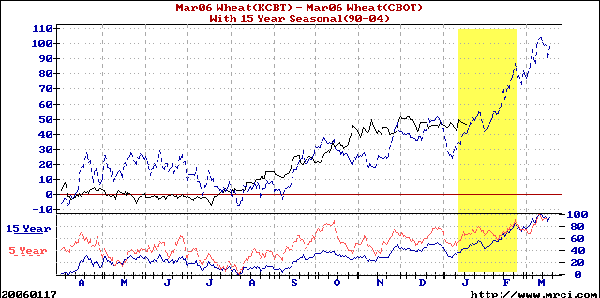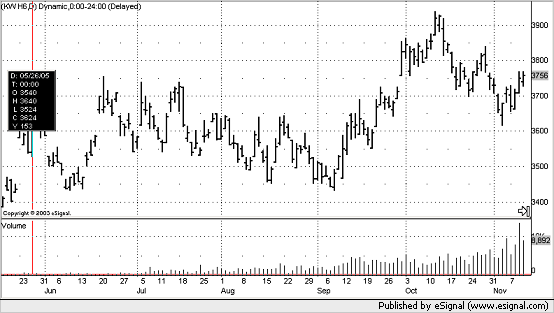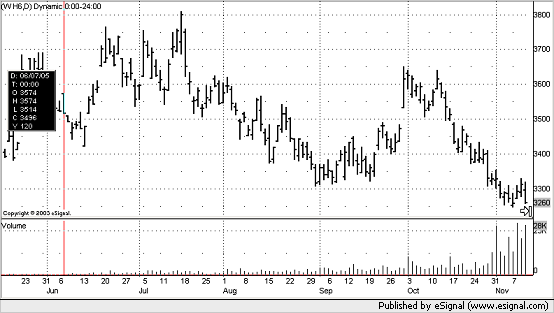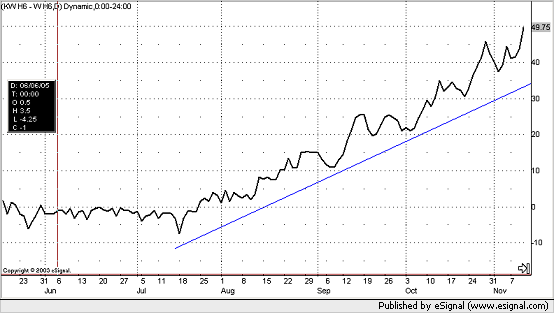Jordan_Andy
Junior member
- Messages
- 22
- Likes
- 0
fxmarkets said:ok, now what specific market is that and what futures please....
now reading it the spread widened between the 2 to -23000 took out 22,000 the spread rallied or then narrowed 10% from low to -21000
hehe whats my buy and sell and risk ? could you get long or look to long that spread on the failure at -23000.
I might need a simplified complete break down. i see the chart spread widening and narrowing, but how many points risk and profit was it ,that low to current?
I may have to, depending on your reply mate , have to research a very basic primer .
I can see the trends, just the technical detail I know nothing of.
cheers
fx.
What you see above is called an "Equity Spread". The problem with the spread above is the following:
One unit move in FC is $500 and one unit move in LC is $400. This is a problem because you can not look at LC-FC, you would get wrong numbers.
What you can do is the following. You multiply each side with the right value (LC with 400 and FC with 500) and you get a chart where you can see the moves in US$. (for more details just send me a short email. I got an PDF which explains it better).
This means, if the spread moves from -23k to -21k it is moving up 2k in US$.
Equity spreads are easy to read because you always see US$ on the chart itself.
If you look at a "normal" spread in the form of A - B you always have to calculate your profit/loss.
Andy




